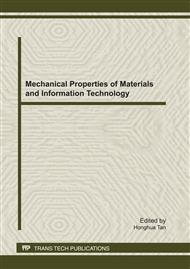p.287
p.293
p.300
p.305
p.311
p.318
p.324
p.331
p.337
Study on Biological Aerated Filter (BAF) of Algae-Contained Micropolluted Water
Abstract:
Using NaCl modified zeolite with high specific surface area as filter media, algae-contained micropolluted water was treated with biological aerated filter (BAF) process. The removal efficiencies of the process on micro-pollutants and removal mechanism of algae-contained micropolluted water were investigated and studied. The results showed that better removal efficiency was obtained in turbidity, Chlorophyll-a, UV254, and CODMn when algae-contained micropolluted water was treated by BAF. The optimal process parameters of the treatment of algae-contained micropolluted water with BAF were gases/water ratio of 0.5~2.5, backwash cycle of 3~5 d, air/water backwash strength of 5~7 L/(m2·s), air backwash strength of 13~17 L/(m2·s), backwash time of 15~20min, temperature of 25~30°C, pH value of 7.8~8.5 and hydraulic load of 0.23~0.35 m3/(m2·h). The results of continuous running for 21 days showed that the removal efficiency of turbidity, Chlorophyll-a, UV254, and CODMn were up to 71.61%, 81.35%, 28.34% and 32.97% respectively under the conditions of these optimal parameters, and the effluent water could meet Grade II of the Drinking Water Quality Standards (CJ 3020~1993). This study could provide technical information for town water plant reconstruction of Taihu Lake and Chaohu Lake basin.
Info:
Periodical:
Pages:
311-317
Citation:
Online since:
September 2011
Authors:
Price:
Сopyright:
© 2012 Trans Tech Publications Ltd. All Rights Reserved
Share:
Citation:


